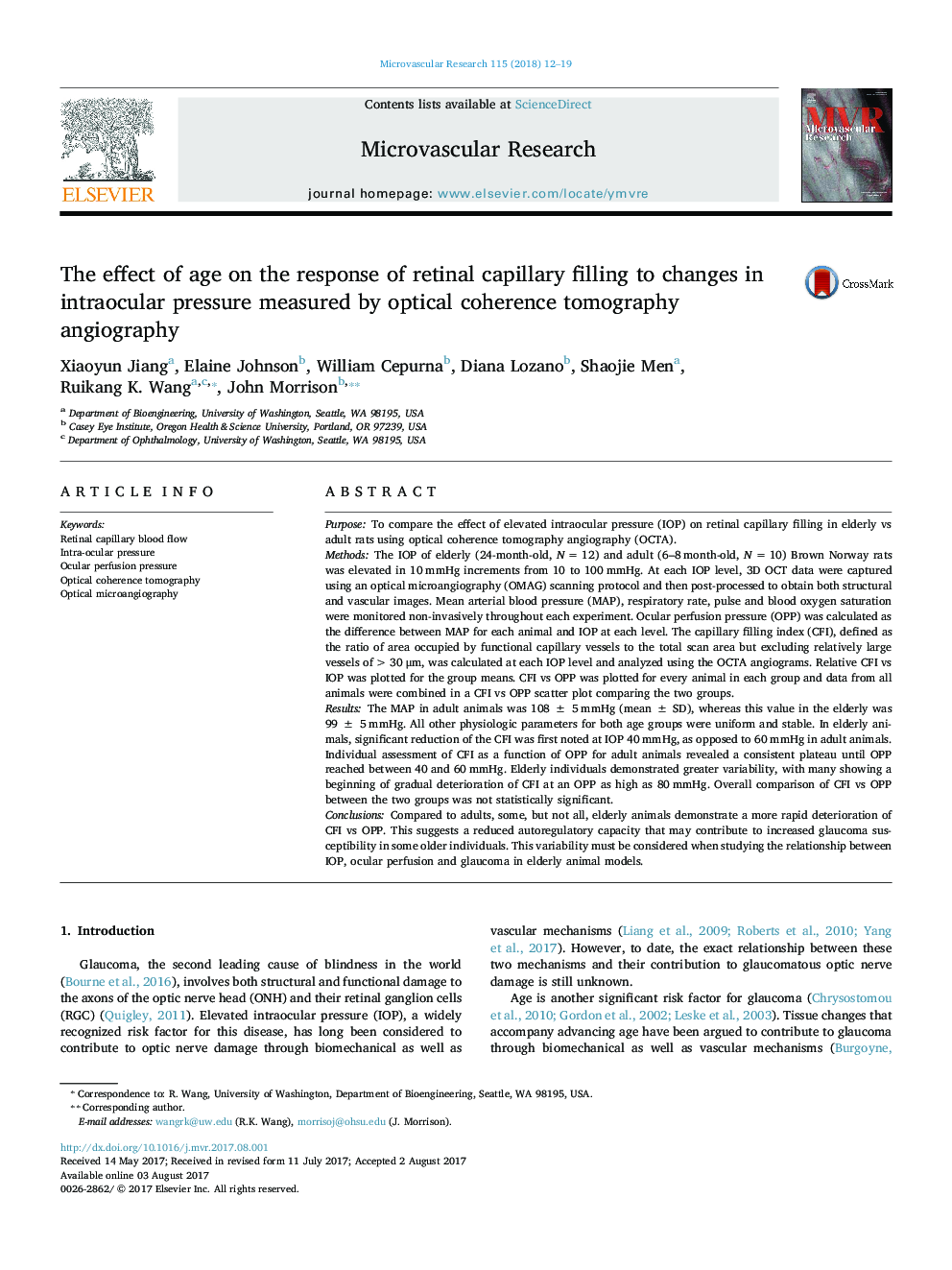| کد مقاله | کد نشریه | سال انتشار | مقاله انگلیسی | نسخه تمام متن |
|---|---|---|---|---|
| 5513735 | 1541269 | 2018 | 8 صفحه PDF | دانلود رایگان |
- Optical coherence tomography angiography is useful in investigating dynamic retinal capillary filling in small animal models.
- Elderly individuals demonstrate greater sensitivity of retinal capillary filling to elevated intraocular pressure than young adults.
- The relationship of retinal capillary filling to ocular perfusion pressure in elderly individuals is variable.
- Some elderly individuals demonstrate less autoregulatory capacity than young adults.
PurposeTo compare the effect of elevated intraocular pressure (IOP) on retinal capillary filling in elderly vs adult rats using optical coherence tomography angiography (OCTA).MethodsThe IOP of elderly (24-month-old, N = 12) and adult (6-8 month-old, N = 10) Brown Norway rats was elevated in 10 mmHg increments from 10 to 100 mmHg. At each IOP level, 3D OCT data were captured using an optical microangiography (OMAG) scanning protocol and then post-processed to obtain both structural and vascular images. Mean arterial blood pressure (MAP), respiratory rate, pulse and blood oxygen saturation were monitored non-invasively throughout each experiment. Ocular perfusion pressure (OPP) was calculated as the difference between MAP for each animal and IOP at each level. The capillary filling index (CFI), defined as the ratio of area occupied by functional capillary vessels to the total scan area but excluding relatively large vessels of > 30 μm, was calculated at each IOP level and analyzed using the OCTA angiograms. Relative CFI vs IOP was plotted for the group means. CFI vs OPP was plotted for every animal in each group and data from all animals were combined in a CFI vs OPP scatter plot comparing the two groups.ResultsThe MAP in adult animals was 108 ± 5 mmHg (mean ± SD), whereas this value in the elderly was 99 ± 5 mmHg. All other physiologic parameters for both age groups were uniform and stable. In elderly animals, significant reduction of the CFI was first noted at IOP 40 mmHg, as opposed to 60 mmHg in adult animals. Individual assessment of CFI as a function of OPP for adult animals revealed a consistent plateau until OPP reached between 40 and 60 mmHg. Elderly individuals demonstrated greater variability, with many showing a beginning of gradual deterioration of CFI at an OPP as high as 80 mmHg. Overall comparison of CFI vs OPP between the two groups was not statistically significant.ConclusionsCompared to adults, some, but not all, elderly animals demonstrate a more rapid deterioration of CFI vs OPP. This suggests a reduced autoregulatory capacity that may contribute to increased glaucoma susceptibility in some older individuals. This variability must be considered when studying the relationship between IOP, ocular perfusion and glaucoma in elderly animal models.
Journal: Microvascular Research - Volume 115, January 2018, Pages 12-19
